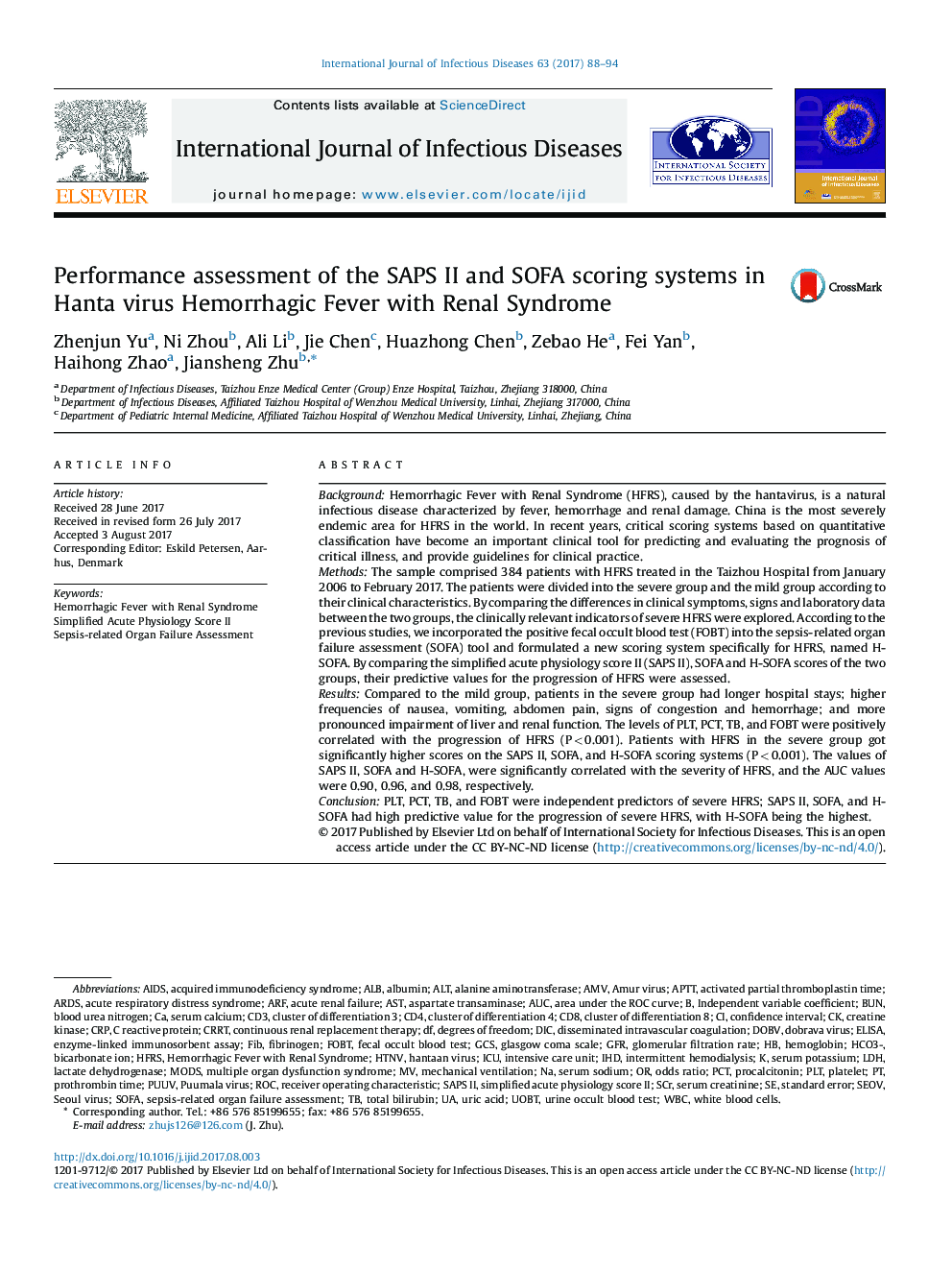| Article ID | Journal | Published Year | Pages | File Type |
|---|---|---|---|---|
| 5667294 | International Journal of Infectious Diseases | 2017 | 7 Pages |
â¢The sample comprised 384 patients with HFRS from January 2006 to February 2017.â¢A new scoring system specifically for HFRS was formulated, named H-SOFA.â¢PLT, PCT, TB, and FOBT were independent predictors of severe HFRS.â¢SAPS II, SOFA, and H-SOFA had high predictive value for the progression of severe HFRS, with H-SOFA being the highest.
BackgroundHemorrhagic Fever with Renal Syndrome (HFRS), caused by the hantavirus, is a natural infectious disease characterized by fever, hemorrhage and renal damage. China is the most severely endemic area for HFRS in the world. In recent years, critical scoring systems based on quantitative classification have become an important clinical tool for predicting and evaluating the prognosis of critical illness, and provide guidelines for clinical practice.MethodsThe sample comprised 384 patients with HFRS treated in the Taizhou Hospital from January 2006 to February 2017. The patients were divided into the severe group and the mild group according to their clinical characteristics. By comparing the differences in clinical symptoms, signs and laboratory data between the two groups, the clinically relevant indicators of severe HFRS were explored. According to the previous studies, we incorporated the positive fecal occult blood test (FOBT) into the sepsis-related organ failure assessment (SOFA) tool and formulated a new scoring system specifically for HFRS, named H-SOFA. By comparing the simplified acute physiology score II (SAPS II), SOFA and H-SOFA scores of the two groups, their predictive values for the progression of HFRS were assessed.ResultsCompared to the mild group, patients in the severe group had longer hospital stays; higher frequencies of nausea, vomiting, abdomen pain, signs of congestion and hemorrhage; and more pronounced impairment of liver and renal function. The levels of PLT, PCT, TB, and FOBT were positively correlated with the progression of HFRS (PÂ <Â 0.001). Patients with HFRS in the severe group got significantly higher scores on the SAPS II, SOFA, and H-SOFA scoring systems (PÂ <Â 0.001). The values of SAPS II, SOFA and H-SOFA, were significantly correlated with the severity of HFRS, and the AUC values were 0.90, 0.96, and 0.98, respectively.ConclusionPLT, PCT, TB, and FOBT were independent predictors of severe HFRS; SAPS II, SOFA, and H-SOFA had high predictive value for the progression of severe HFRS, with H-SOFA being the highest.
